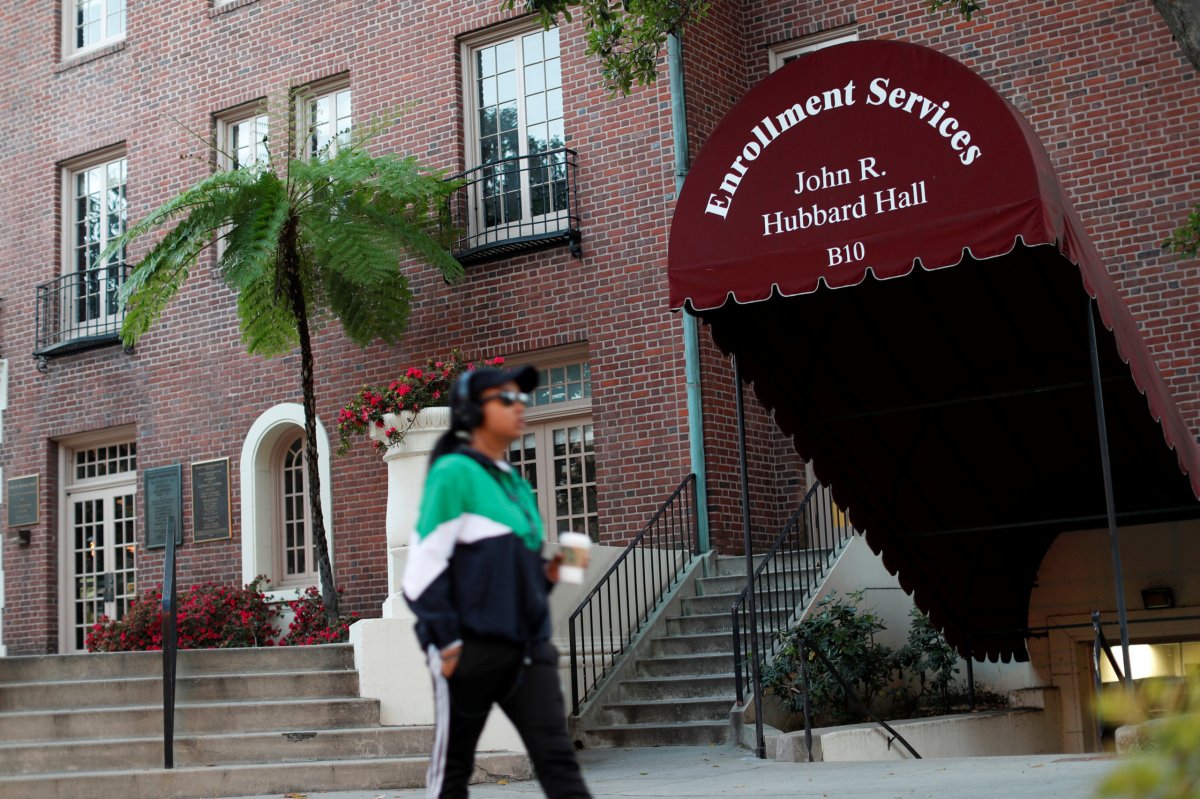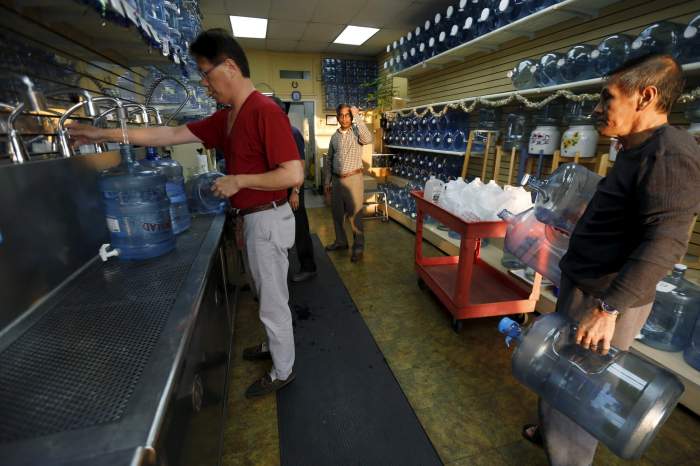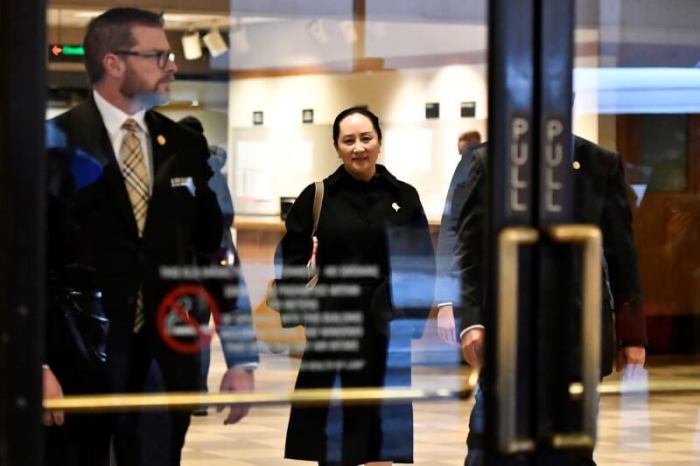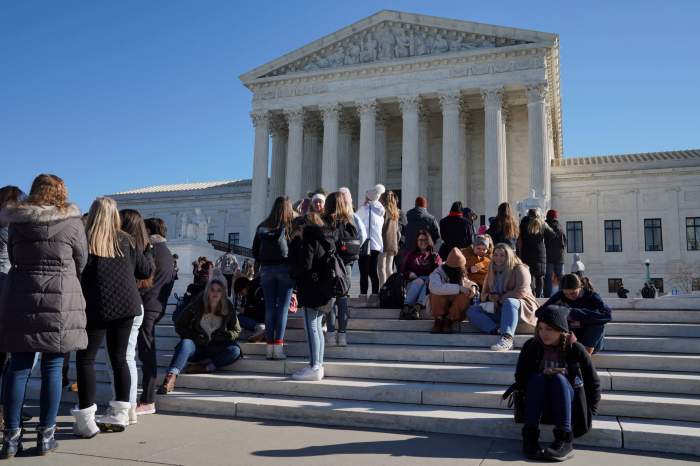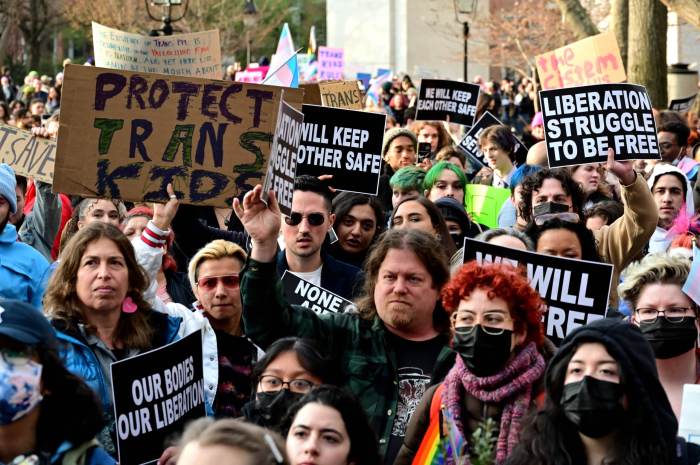By Ann Saphir and Howard Schneider
SAN FRANCISCO/WASHINGTON (Reuters) – Experts agree that college pays off. But at any price?
More than two dozen wealthy families charged with allegedly cheating or bribing their kids’ way into elite schools are learning the hard way that crime doesn’t pay, even when higher education is the prize.
Potential criminal punishments aside, the scheme raises the question: was the premium parents paid worth the anticipated long-term economic gain for their children?
Take Bruce Isackson, president of a Woodside, California, real estate firm, and his wife Davina, who in July 2015 turned over 2,150 shares worth $251,000 of Facebook Inc stock to help get their daughter into UCLA as a fake soccer recruit, according to a federal criminal complaint. If they had just held on to those shares, they would have been worth around $373,000 today.
They later allegedly spent another $350,000 to get their younger daughter into the University of Southern California as a bogus rowing recruit.
Manuel Henriquez, a resident of Atherton, California, who until Tuesday was chairman of Silicon Valley finance company Hercules Capital Inc, and his wife Elizabeth were arrested in New York after allegedly shelling out more than $500,000 to cheat on entrance exams and fake their daughter’s tennis expertise to get her into Georgetown University.
Just imagine the calculus of the unnamed relatives of a teenaged girl who authorities said paid $1.2 million to get her into Yale University as a soccer recruit, though she did not play competitively.
And then there are the parents accused by prosecutors of paying $15,000 apiece to cheat on standardized tests to make their kids’ applications look better.
All of these were upfront costs incurred even before the first checks for tuition, room and board and other fees were written. In each case, would the crime have even paid off?
GRAPHIC – The college gamble: https://tmsnrt.rs/2O56E6A
DOING THE MATH
Five years ago, San Francisco Federal Reserve Bank President Mary Daly – then associate director of the bank’s research department – asserted in a paper that college costs more often than not are worth the expense over the long term. A student in 2014 paying $21,200 a year for a four-year degree, she found, would break even with someone with only a high school diploma by the age of 38 and would have made a cumulative $831,000 more than that individual by retirement.
But what about the Yale student and her family, who paid $1.2 million up front and then presumably were on the hook for full tuition and room and board adding up to more than $70,000 a year? That’s an all-in tab for that degree of $1.48 million.
Using Daly’s approach as a guide and inputting updated government data on median incomes for individuals with and without college degrees, a Reuters analysis found a college grad whose $70,000 annual tuition was paid upfront would outearn a high school grad by $1.3 million over a lifetime of work, assuming each earned the median national wage for their demographic inflated over time.
But the unidentified student’s family paid more than five times the Yale sticker price after the bribe, a cost that would not be fully recovered until the child reaches age 64, assuming 3 percent annual wage growth and a one-time, 10 percent increase at age 34 to reflect higher earnings of older adults.
In many cases involving wealthy parents, future earnings may be less of a draw than the prestige of saying your offspring were at Yale or Stanford, or the lure of potential connections with influential elite-school graduates.
But had some of these parents not been caught, the payoff alone might have been worth it.
In the case of a less expensive school like UCLA, the $391,000 cost to the Isacksons – the $251,000 bribe plus $140,000 for four years of tuition and fees – would still leave a lifetime earnings surplus for their daughter of a bit over $1.2 million.
Meanwhile, for those parents like “Desperate Housewives” actress Felicity Huffman, whose total outlay in the fraudulent enterprise was just $15,000 to improve their childrens’ entrance exam scores by cheating, the payoff would have been handsome. Assuming the student graduates, the $22,000 gap in median annual pay between high school and college graduates would easily offset the extra investment.
Lawyers representing the Henriquez couple and Bruce Isackson did not respond to a request for comment. Davina Isackson could not be reached.
GRAPHIC – College pays off, even if you pay your own way: https://tmsnrt.rs/2FbTySj
INTANGIBLES
There are benefits to a degree from a top college beyond excess earnings over time. Unemployment is lower among college grads and job satisfaction is higher.
Philip Oreopoulos, an economics professor at the University of Toronto, has even quantified non-work-related benefits of a college education, including lower divorce rates, better health, and more happiness overall, even after accounting for pay differences.
“It goes way beyond financial gain,” he says, adding that he in no way endorses parental cheating, which he called “grossly unfair.”
The still-unfolding scandal highlights economic inequalities exacerbated by college admissions programs that in some cases legally give preference to children of wealthy parents, even as U.S. students are saddled with a collective $1.56 trillion in loans, Federal Reserve data shows.
The financial analysis suggests that, in terms of money alone, at least some of the bribes and cheating would have led to a net gain – unless you consider how the money might otherwise have been invested.
The return on the median fraudulent payment of $250,000, invested at the standard 6 percent yearly return used by many long-term financial planners, after high school and through age 65 would have been $3.9 million, Reuters calculated.
And for $1.2 million – the maximum shelled out? $18.6 million.
Next time, tell your mom to just give you the money.
(Additional reporting by Trevor Hunnicutt in New York; Editing by Dan Burns and Bill Berkrot)

